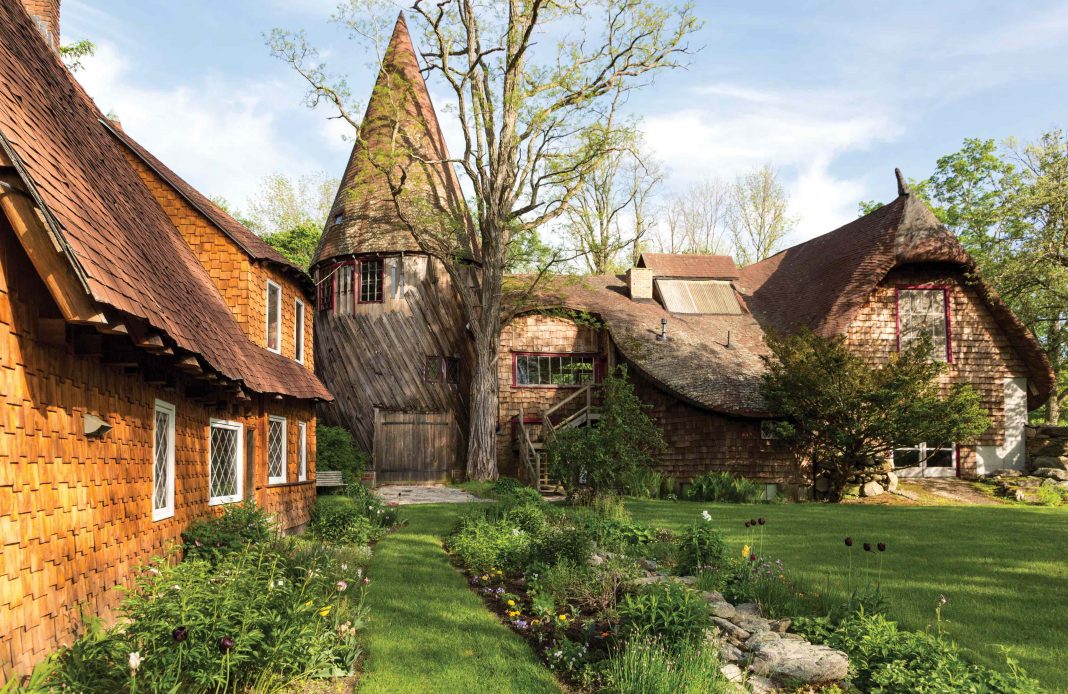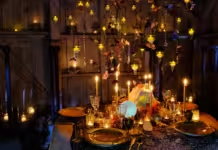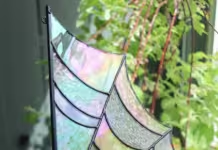Photography by Ren Nickson Photography
“The path was now plain before them, well-tended and bordered with stone. It wound up on to the top of a grassy knoll, now grey under the pale starry night; and there, still high above them on a further slope, they saw the twinkling lights of a house.”
—J.R.R. Tolkien, The Fellowship of the Ring
What do you reckon Tom Bombadil’s house looks like in The Fellowship of the Ring? In my imagination, it looks like Santarella in the Berkshire Mountains of Western Massachusetts—or Santarella looks like it. The first time I caught sight of this house, I was driving along looking for the trailhead of a close-by branch of the Appalachian Trail. It was like seeing a figment of your dreams made real, a fantasy drawing come to life. I almost drove off the road.
As much as we may like the dream that buildings like Santarella simply emerge fully formed from nature, they are created, and how they are can be fascinating—and inspirational! Santarella was brought into being by English-born sculptor Henry Hudson Kitson in the 1920s: an 1880s carriage house that he renovated to use as a studio and teaching space, and conceived as a retreat for resident artists. Kitson’s sculptural work is familiar to travelers throughout New England. He sculpted the Pilgrim Maiden in Plymouth, the Minuteman in Lexington, Roger Conant in Salem, and the statue of Robert Burns in Winthrop Square in Boston. In the interior of Santarella’s great hall, a sketch for a bust drawn in chalk peeks from beneath some hanging grapevines as a ghost-like reminder of Kitson’s artistic process.
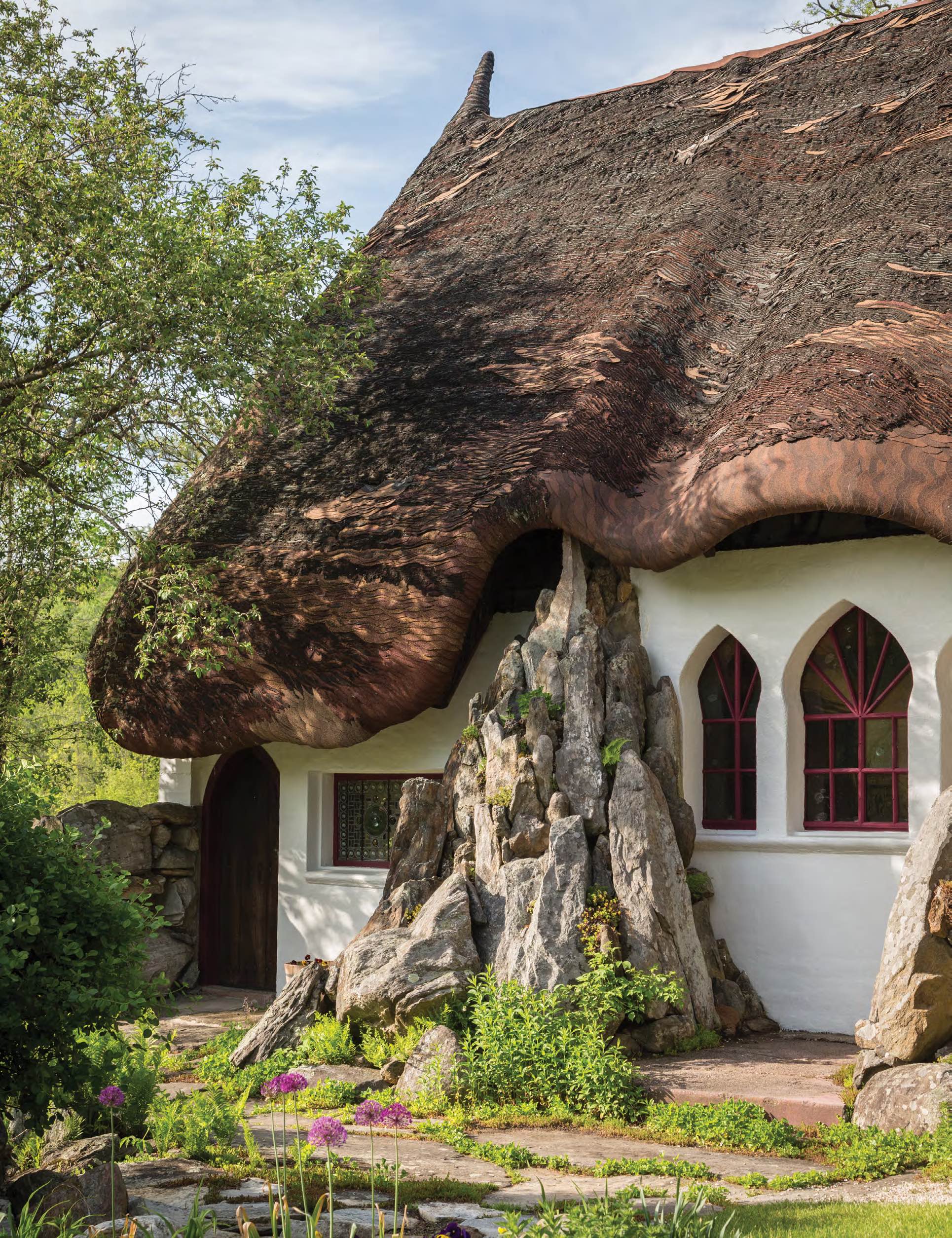
Although Kitson’s sculpture is classical in form and formality, Santarella unfolds in a storybook style. As naturally occurring as it seems, it is a style that is accomplished: Santarella’s curved and rolling shape is created by an armature. (Of course a sculptor would use an armature!) It has concrete walls, and the white of the exterior is plaster. Indoors, a gabled roof of wood timbers soars above the hall. The materials that make up Santarella and its surrounding buildings derive from local sources: stones donated by local farmers from their fields and walls, sheathing reclaimed from old barns to reinforce the antique silos—and the silos themselves, old even at the time of their installation, were delivered by wagon from nearby Pittsfield.
When I arrive at Santarella, the long afternoon light casts conical shadows of the turrets of the silos along the ground. The blooms of the front garden have been hit by a first frost yet are still vibrant in color. On the other side of the stream that meanders through the property, a furry Siamese cat is hunting intently, humped up in the green grass, eyeing the underbrush. Behind the main house is a grove of lilac trees that are bare for the season. Kitson continually morphed his property. He enlisted local farmers to grow rye for thatch to replicate the cottage roofs of his roof of wood timbers soars above the hall. The materials that make up Santarella and its surrounding buildings derive from local sources: stones donated by local farmers from their fields and walls, sheathing reclaimed from old barns to reinforce the antique silos—and the silos themselves, old even at the time of their installation, were delivered by wagon from nearby Pittsfield.
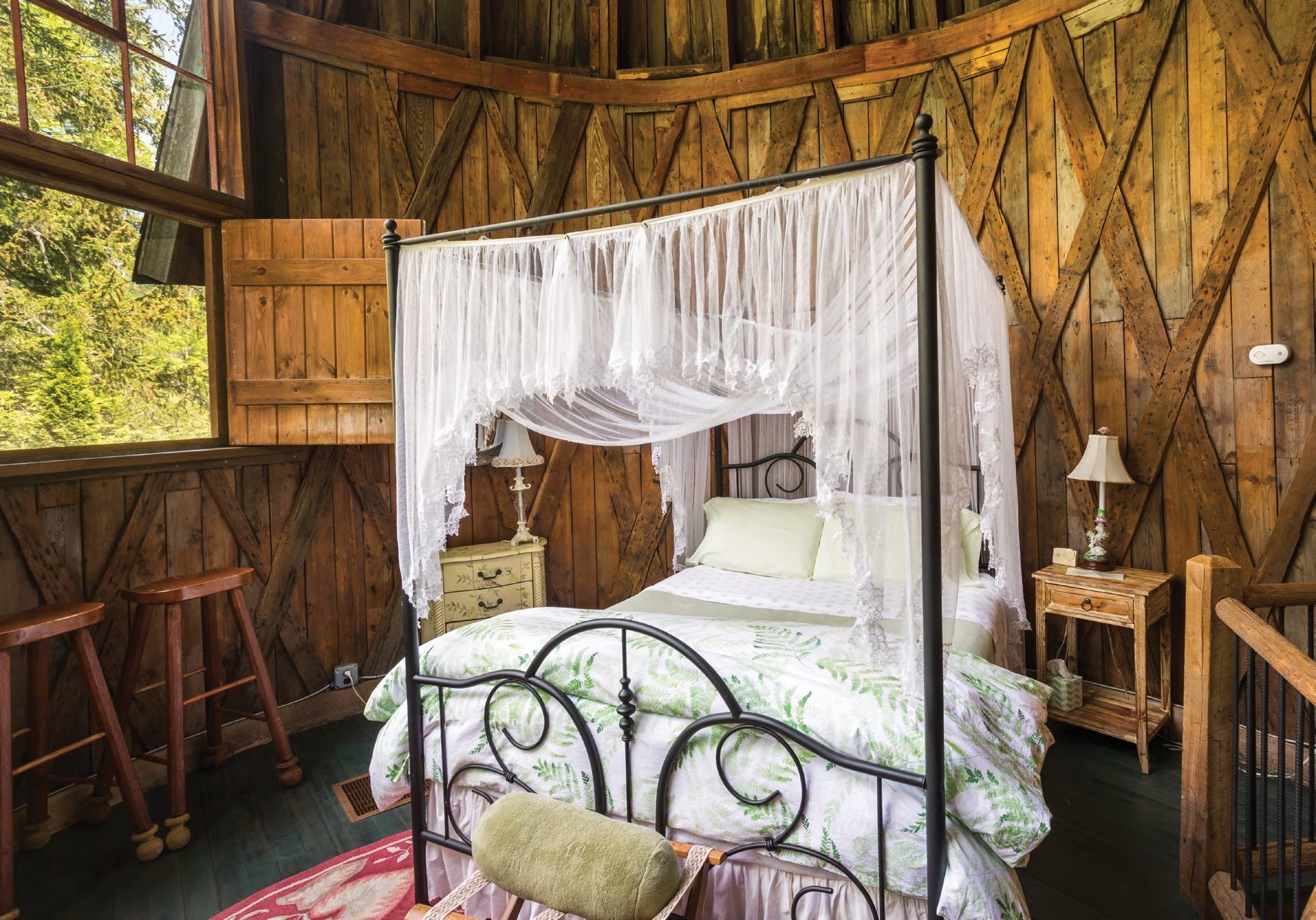
When I arrive at Santarella, the long afternoon light casts conical shadows of the turrets of the silos along the ground. The blooms of the front garden have been hit by a first frost yet are still vibrant in color. On the other side of the stream that meanders through the property, a furry Siamese cat is hunting intently, humped up in the green grass, eyeing the underbrush. Behind the main house is a grove of lilac trees that are bare for the season.
Kitson continually morphed his property. He enlisted local farmers to grow rye for thatch to replicate the cottage roofs of his native Britain, but the crop went bad, so he used tons of asphalt to shape Santarella’s roof, cutting each tile by hand into a wave-like shape and laying on three layers of different-colored shingles.
The effect is real: The roof looks like thatch, organic, spilling all over itself in waves of intensely layered multicolor shingles, intricately patterned and laid by hand. The lines of Santarella flow gracefully with the landscape, sinking and surging, its roof mirroring the rolling line of mountains in the distance, the colors of the shingles like patches formed in the forest of trees of different species, “which he designed to look like the hillside,” current owner Denise Hoefer tells me. “The greens and the silvers of the conifers, and the golds and the oranges.”
Hoefer and her husband, Dennis Brandmeyer, take turns walking me around the grounds and buildings. Santarella is a sculpted landscape. In the back garden is a concrete bench poured and reinforced by Kitson, and a natural bridge that is a wide slab of stone across the clear, running stream, leading to a nature path into the woods. Nearby, a broad lily pond reflects the sun and the trees.
“He was fascinated by stone,” Hoefer explains. And indeed Santarella has stone buttresses: jagged, rearing reefs of stone that make the house look as if it has burst forth from the earth.
The interior of Santarella is a wedding hall, a feasting hall. Kitson imported old stained-glass windows from England, and the delicious late-autumn light flowing through them casts pools of color on the floor. The building is true to form as a former carriage house. In the upstairs loft you can see the outlines of a hatch through which hostlers used to pitch hay down to the horses, and the faint tracery of former carriage bays on the concrete floor.
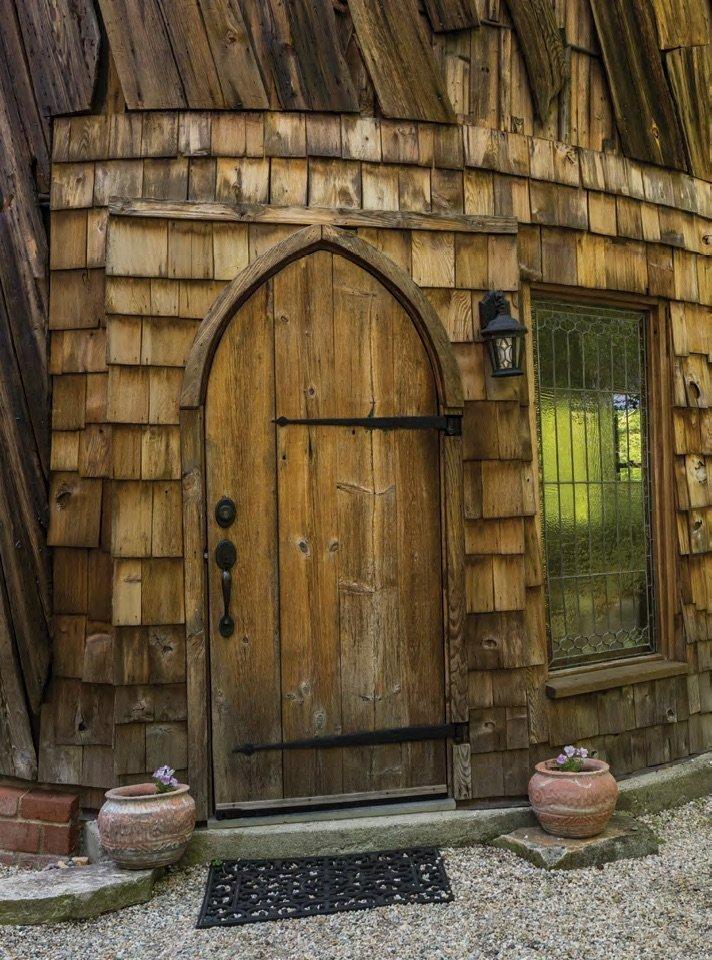
Treasures are everywhere to discover. In both silos are fairy windows, bottle-bottoms or glass globes that form portholes through knots in the wood.
I ask if there are any enchanted occurrences about the property. Hoefer pauses to reflect, then tells me her favorite delights. In the spring, the front garden froths with tulips and violets. In the summer nights, fireflies form constellations of golden light against the forest and over the stream.
Santarella became Kitson’s eccentric passion, and by the end of his life it had consumed his fortune. After his death the house was abandoned. It was brought back from dereliction—local kids used to have parties in it, and it was in such disrepair that the town considered burning it to the ground—through the care of a series of owners. Hoefer and Brandmeyer—a remodeling contractor, who restored it—are transplants to the Berkshires from California and have made a project of taking the building back to its original shape. The couple lets out the great hall as a wedding and event space, and you can book the silos for overnight stays at Airbnb. Lie in the grass, and in the summer watch for fireflies.
To book the Silo Studio: airbnb.com/rooms/1238125
And the Grand Silo Tower Suite: airbnb.com/rooms/1216130
Would you like a fairytale wedding at Santarella? Try the property’s main page at santarella.us. If you’d like to be the next owner of Santarella, contact the broker Steven Weisz at SWeisz@WPSIR.com or call 917-670-6339.




























